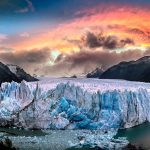Discover Patagonia’s Best National Parks: Your Ultimate Guide
When you think of Patagonia, visions of rugged landscapes, awe-inspiring mountains, glistening glaciers, and sprawling forests come to mind. This remote region, straddling both Chile and Argentina, is a bucket-list destination for nature enthusiasts and adventure seekers alike. But with so many incredible national parks to choose from, where do you start? Don’t worry; we’ve got you covered!
Why Visit Patagonia’s National Parks?
Patagonia’s national parks are a treasure trove of natural beauty and outdoor adventure. Whether you’re an avid hiker, a wildlife enthusiast, or simply looking for some of the most stunning vistas on the planet, Patagonia has something for everyone.
- Diverse Landscapes: From glacial lakes to towering mountains.
- Adventure Opportunities: Trekking, kayaking, wildlife viewing, and more.
- Unique Ecology: Home to rare and unique flora and fauna.
Most Frequently Asked Questions About Patagonia’s National Parks
1. What are the must-visit national parks in Patagonia?
Patagonia boasts numerous national parks, but a few stand out as the crown jewels:
Torres del Paine National Park (Chile)
Known for its iconic granite towers, Torres del Paine is a hiker’s paradise.
- The W Trek: A popular multi-day hike offering spectacular views of lakes, glaciers, and mountains.
- Grey Glacier: A stunning glacier you can visit by hiking or boat.

Los Glaciares National Park (Argentina)
Home to the famous Perito Moreno Glacier, this park is a UNESCO World Heritage Site.
- Perito Moreno Glacier: One of the few glaciers in the world that is still growing.
- Fitz Roy Mountain: Popular for challenging hikes and breathtaking scenery.

Tierra del Fuego National Park (Argentina)
Located at the southernmost tip of Patagonia, this park offers a variety of landscapes including forests, mountains, and coastal views.
- End of the World Train: A scenic train ride that gives you a unique perspective of the park.
- Lago Roca: Perfect for canoeing and photography.
2. When is the best time to visit Patagonia?
The best time to visit Patagonia largely depends on what you want to do:
- Summer (December to February): Ideal for hiking and outdoor activities, but also the busiest time.
- Autumn (March to May): Cooler temperatures, fewer crowds, and stunning fall foliage.
- Winter (June to August): Cold and less accessible, but offers unique winter activities and landscapes.
- Spring (September to November): Mild weather and blooming flowers, a good time for wildlife spotting.
3. How can I get to Patagonia’s national parks?
Getting to Patagonia requires some planning, but the journey is well worth it. Here are some tips:
- By Air: Fly into major hubs like Punta Arenas (Chile) or El Calafate (Argentina). From there, you can take local buses or rent a car.
- By Bus: Long-distance buses connect major cities to national parks, but they can be time-consuming.
- By Car: Renting a car offers the most flexibility for exploring the region at your own pace.
4. What should I pack for a trip to Patagonia?
Patagonia’s weather can be unpredictable, so it’s important to come prepared:
- Layered Clothing: Temperature can vary greatly, so layers are essential.
- Waterproof Gear: Rain and wind are common, so pack a good quality rain jacket and pants.
- Hiking Boots: Sturdy and comfortable hiking boots are a must.
- Accessories: Sunglasses, sunscreen, and a hat for sunny days.
5. Is it safe to travel to Patagonia’s national parks?
Patagonia is generally safe, but it’s always wise to take precautions:
- Stay Informed: Check local weather conditions and park advisories.
- Guided Tours: Consider joining guided tours for added safety and to learn more about the area.
- Essential Supplies: Always carry a map, sufficient food, and water.
Expert Tips for Visiting Patagonia’s National Parks
Here are some pro tips to make your visit unforgettable:
- Book Early: Accommodations and guided tours can fill up quickly during peak seasons.
- Respect Nature: Follow Leave No Trace principles to help preserve the natural beauty.
- Be Flexible: Weather can change rapidly, so have a plan B for your activities.
Conclusion
Exploring Patagonia’s national parks is a journey of a lifetime, offering unparalleled natural beauty and adventure opportunities. Whether you’re gazing at the granite towers of Torres del Paine, walking alongside the immense Perito Moreno Glacier, or soaking in the diverse landscapes of Tierra del Fuego, you’ll leave with memories that will last forever. So pack your bags, lace up your hiking boots, and get ready to be amazed by the wonders of Patagonia!








